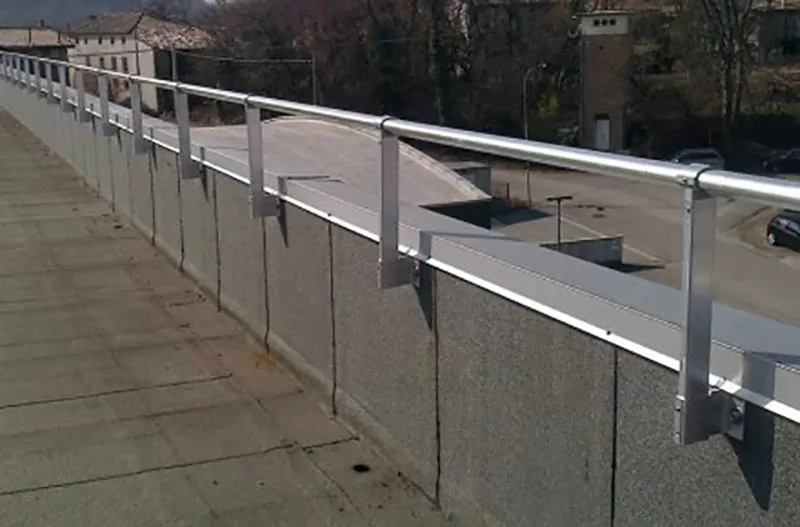Ensuring the safety of workers at heights is crucial in various industries, from construction to manufacturing. Safety guardrail systems play a key role in preventing accidents and protecting workers from falls. However, understanding and adhering to the relevant regulations and standards is essential for effective implementation. In this blog, we’ll explore the regulations and standards governing safety guardrail systems in the Philippines, and why they are critical for maintaining workplace safety and compliance.
What Are Safety Guardrail Systems?
Definition: Safety guardrail systems are protective barriers designed to prevent falls and ensure the safety of individuals working at elevated heights. They are essential in areas where there is a risk of falling, such as rooftops, platforms, and walkways.
Types:
Permanent Guardrails: Installed for long-term use on rooftops, platforms, and other elevated areas. These are robust and durable, designed to withstand various weather conditions and provide a physical barrier against falls.
Portable Guardrails: Ideal for temporary or changing work environments, these guardrails are lightweight and easy to install and remove. They are perfect for construction sites and maintenance projects.
Customized Solutions: Tailored guardrail systems designed to meet specific site requirements and safety objectives, ensuring compliance with relevant standards and regulations.
Key Regulations for Safety Guardrail Systems in the Philippines
Overview of Regulations: Safety Guardrails in the Philippines must comply with several key regulations to ensure worker safety and prevent accidents. These regulations provide guidelines for the design, installation, and maintenance of guardrails.
Local Regulations:
Occupational Safety and Health Standards (OSHS): This set of regulations outlines the safety measures required for workplaces, including the installation and maintenance of guardrail systems to prevent falls.
Philippine National Standards (PNS): These standards provide specific guidelines for the construction and implementation of safety guardrail systems, ensuring they meet local safety requirements.
International Standards and Their Influence
Global Standards: International standards such as the European EN 14 122-3 and the French NFE 85-015 provide comprehensive guidelines for safety guardrail systems. These standards cover aspects such as load capacity, durability, and installation practices.
Impact on Local Regulations: International standards influence local regulations by setting benchmarks for safety and performance. Adopting these standards helps ensure that guardrail systems in the Philippines are on par with global safety practices, providing additional assurance of their effectiveness and reliability.
Compliance and Implementation
Compliance Requirements: To ensure that guardrail systems comply with regulations, it’s essential to follow these steps:
Design and Installation: Adhere to regulatory guidelines for designing and installing guardrails.
Regular Inspections: Conduct routine checks to ensure guardrails remain in good condition and continue to meet safety standards.
Documentation: Maintain records of inspections and maintenance to demonstrate compliance.
Inspection and Maintenance: Regular inspection and maintenance are crucial to address wear and tear, ensuring that guardrails continue to function effectively and provide adequate protection.
Choosing the Right Safety Guardrail System
Factors to Consider: When selecting a safety guardrail system, consider factors such as the specific hazards of your work environment, the type of guardrail required (permanent, portable, or customized), and compliance with relevant standards.
Customized Solutions: Tailoring guardrail systems to the unique needs of your site ensures optimal protection and adherence to safety regulations. Work with experts to design solutions that fit your specific requirements and safety objectives.
Benefits of Complying with Regulations
Worker Safety: Compliance with safety guardrail regulations helps prevent accidents and protect workers, reducing the risk of injuries and fatalities.
Legal and Financial Implications: Adhering to regulations helps avoid fines and legal issues, and demonstrates a commitment to workplace safety. Compliance also contributes to a positive reputation and can lead to increased trust from clients and stakeholders.
Takeaway
Understanding and adhering to regulations and standards for safety guardrail systems is vital for ensuring a safe work environment. By complying with local and international standards, you not only protect your workers but also avoid potential legal and financial repercussions. For expert guidance and high-quality safety solutions, consider consulting with professionals who specialize in safety guardrail systems.

